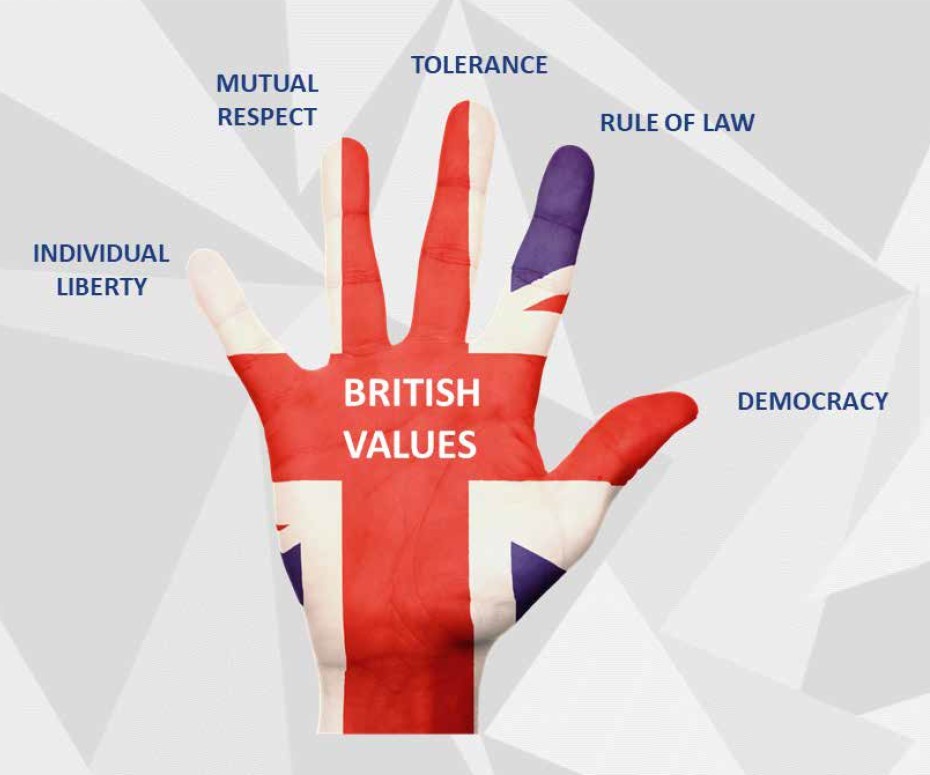


On 27th November 2014, the Department for Education published guidance on promoting British values in schools to ensure young people leave school prepared for life in modern Britain.
Until recently, schools have been required to ‘respect’ these values, but as a result of changes brought in, all schools must now have a clear strategy for embedding these values and show how their work with pupils has been effective in doing so.
The Department for Education has stated that there is a need “to create and enforce a clear and rigorous expectation on all schools to promote the fundamental British values of democracy, the rule of law, individual liberty and mutual respect and tolerance of those with different faiths and beliefs.”

A recommended way to teach the British values to children is through the use of the ‘hand image’.
We introduce the concept of British values to the children, then focus on each value in turn.
The thumb represents democracy. Children are taught the idea of using ‘thumbs up / thumbs down’ to vote for something they like or dislike.
We reinforce the Democracy through:
The index finger represents the rule of law. Teach the children the idea of using ‘wagging their finger’ to tell someone what to do or not do.
We reinforce the rule of law through:
The middle finger represents tolerance. Teach the children the idea of the tallest finger ‘pointing towards God.’ He teaches us to be tolerant of each other.
We reinforce tolerance of those of different faiths and beliefs through:
The ring finger represents respect. Teach the children the idea of marriage or a relationship – we respect people we love or care about.
We reinforce mutual respect through:
The little finger represents liberty. Teach the children the idea of the little finger being ‘lil’ ole me’ – the freedom to be who they want to be.
We reinforce individual liberty through: